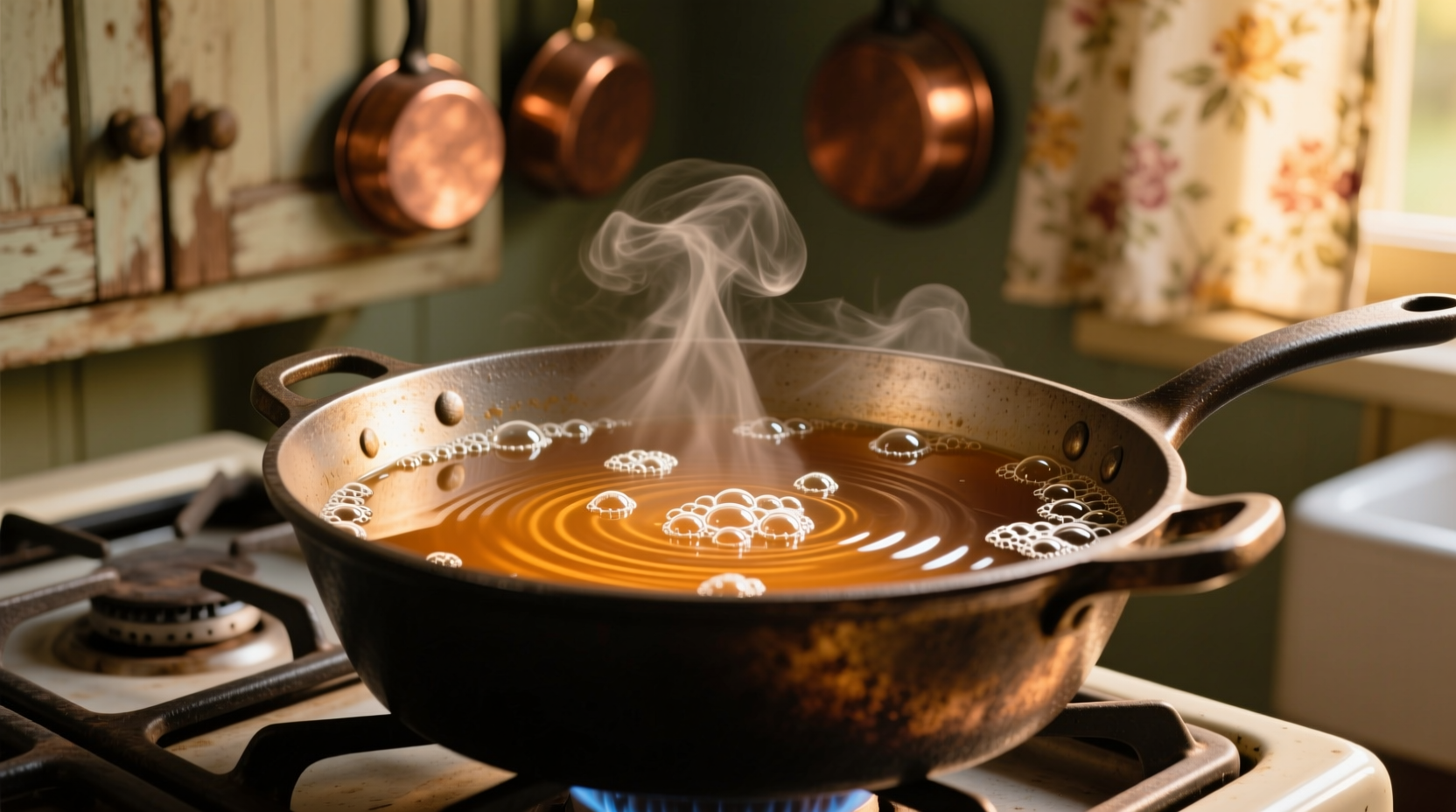Simmering means cooking food in liquid just below the boiling point (180°-205°F or 82°-96°C), where small bubbles rise gently to the surface without vigorous rolling. This gentle cooking method preserves delicate textures while allowing flavors to meld perfectly.
When you see "simmer" in a recipe, it's not just a suggestion—it's a precise cooking technique that makes the difference between a cloudy broth and crystal-clear consommé, tender pulled pork and tough meat, or perfectly infused sauce and one with separated fats. Understanding what simmer means in cooking transforms your results from mediocre to masterful.
What Simmering Actually Looks Like (And Why Temperature Matters)
Many home cooks mistakenly equate simmering with boiling. The critical distinction lies in temperature control and visual cues. A true simmer occurs when liquid reaches 180°-205°F (82°-96°C), significantly lower than water's boiling point of 212°F (100°C) at sea level. At this temperature:
- Small bubbles form at the bottom of the pot and rise slowly
- Bubbles break the surface gently without creating constant agitation
- Steam rises steadily but not vigorously
- The liquid moves with a subtle, consistent motion
This precise temperature range allows proteins to coagulate slowly without toughening, starches to release gradually for proper thickening, and flavors to meld without breaking down delicate compounds. As noted by the Culinary Institute of America in their Professional Cooking textbook, "simmering is the workhorse technique for building complex flavors while maintaining ingredient integrity."
| Cooking Method | Temperature Range | Visual Indicators | Ideal For |
|---|---|---|---|
| Rolling Boil | 212°F+ (100°C+) | Vigorous, constant bubbling across entire surface | Pasta, blanching vegetables |
| Full Boil | 208°-212°F (98°-100°C) | Large bubbles rapidly breaking surface | Hard-boiled eggs, sterilizing equipment |
| Simmer | 180°-205°F (82°-96°C) | Small bubbles rising gently, occasional surface break | Stocks, soups, stews, braises |
| Low Simmer | 160°-180°F (71°-82°C) | Faint wisps of steam, barely visible bubbles | Delicate sauces, poaching eggs |
| Poach | 160°-180°F (71°-82°C) | No visible bubbles, just steam | Fish, fruit, eggs |
Why Simmering Outperforms Boiling for Most Liquid-Based Dishes
When you maintain proper simmer temperature rather than boiling, you achieve three critical advantages:
- Texture Preservation: Vigorous boiling breaks down delicate ingredients too quickly. Simmering allows proteins like collagen to convert to gelatin gradually, creating rich, velvety textures in stocks without making meat stringy.
- Flavor Development: The gentle movement of a simmer circulates flavors without causing emulsification breakdown. This is why restaurant-quality sauces maintain their silky consistency while home versions often separate.
- Clarity Control: For consommés and clear broths, simmering prevents agitation that would cloud the liquid with suspended particles. The USDA Food Safety and Inspection Service confirms that proper simmering temperatures effectively destroy pathogens while preserving food quality.

Mastering the Simmer: Practical Techniques You Need
Even experienced cooks struggle with maintaining a consistent simmer. These professional techniques solve common problems:
Adjusting for Your Stovetop
Electric coil burners retain heat longer than gas, requiring more frequent adjustments. Induction cooktops respond instantly but can overshoot temperatures. Always start at medium-high to reach temperature, then reduce to the lowest setting that maintains gentle bubbling.
The Lid Positioning Trick
For dishes requiring precise temperature control like custards or delicate sauces, leave the lid slightly ajar (about 1 inch). This allows just enough steam to escape to prevent boiling over while maintaining consistent heat.
Water Bath Method for Precision
When absolute temperature control matters (like for hollandaise), use a double boiler or place your saucepan in a larger pan of simmering water. This indirect heat method prevents scorching and provides buffer against temperature spikes.
Troubleshooting Common Simmering Problems
Problem: Liquid keeps boiling despite low heat setting
Solution: Reduce heat further and consider switching to a heavier-bottomed pot that distributes heat more evenly. For electric stoves, turn off burner completely once simmer is achieved and let residual heat maintain temperature.
Problem: Simmer keeps stopping despite medium heat
Solution: Increase heat slightly and use a lid to trap heat. If cooking high-altitude (above 3,000 feet), remember water boils at lower temperatures, so your simmer occurs at lower settings than at sea level.
Problem: Uneven simmer with only one side bubbling
Solution: Stir occasionally to distribute heat, or use a heat diffuser plate to spread burner heat more evenly across the pot bottom.
When Not to Simmer: Critical Exceptions
While simmering works for most liquid-based cooking, certain applications require different approaches:
- Reducing sauces: Start with a gentle boil to accelerate evaporation, then reduce to simmer once concentrated
- Blanching vegetables: Requires full rolling boil to set colors and stop enzyme activity
- Disinfecting equipment: Needs sustained boiling (212°F/100°C) for pathogen elimination
Understanding what simmer means in cooking isn't just about temperature—it's about recognizing how heat transfer affects your specific ingredients. As Harold McGee explains in On Food and Cooking, "The difference between simmering and boiling isn't merely quantitative; it represents qualitatively different cooking environments that produce fundamentally different results."











 浙公网安备
33010002000092号
浙公网安备
33010002000092号 浙B2-20120091-4
浙B2-20120091-4